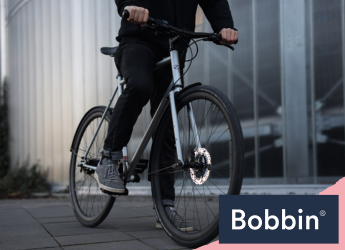What to Wear When Cycling to Work?
If you’re reading this, chances are you’ve embraced the experience of cycling to work. And one aspect of this journey that deserves special attention: what to wear.
In this guide, we’ll steer you through the maze of cycling apparel choices. Read on so you arrive at your workplace not only looking your best but also feeling prepared.
Considerations for Cycling Clothing

Comfort
Long rides demand comfortable clothing that allows you to focus on the road. Imagine spending hours in the saddle with ill-fitting or restrictive garments. This, my fellow cyclist, is a recipe for an unpleasant journey. Opting for comfortable clothing ensures a smoother and more enjoyable commute. Moreover, preventing chafing and irritation.
Breathable fabrics and moisture-wicking materials are key for comfort during cycling. When you’re pedalling hard, your body generates heat and sweat.
Breathable fabrics like polyester blends or technical fabrics allow air circulation. The material helps keep you cool and prevents excessive perspiration. Moisture-wicking materials, in contrast, draw sweat away from your skin. Your sweat is likely to evaporate quickly, maintaining dryness when wearing one.
Visibility

Safety should always be a top priority when cycling. This is especially true during commutes, where you share the road with vehicles.
High-visibility clothing ensures that motorists and pedestrians can see you clearly. Bright and contrasting colours make you stand out in various lighting conditions. Consider fluorescent yellows, oranges, and greens.
Reflective accessories are indispensable for enhancing visibility, particularly in low-light or nighttime situations. Even clothing, helmets, and bike accessories can bounce light back to its source. This helps make you more noticeable to others on the road. For added visibility, consider using reflective arm and leg bands or ankle straps.
Weather conditions
Weather significantly impacts your clothing choices when cycling to work. For rainy conditions, invest in waterproof or water-resistant jackets, pants, and shoe covers. Consider wearing a lightweight rain shell to protect yourself from unexpected showers. It’s also wise to have fenders on your bike to minimise water splashes.
When facing heat, choose lightweight, breathable fabrics that allow maximum ventilation. Opt for moisture-wicking shirts and shorts to keep sweat at bay. Don’t forget sunscreen, sunglasses, and a helmet to protect yourself from UV.
In colder temperatures, layering is key. Start with a moisture-wicking base layer. Then add insulating mid-layers and top it off with a windproof and waterproof outer shell. Don’t forget warm gloves, a buff or neck gaiter, and shoe covers to keep your extremities cosy.
Essential Clothing Items for Cycling to Work

(Image Credit: Wallpaper Flare)
These essential clothing items and accessories are designed to enhance your:
- comfort
- safety
- overall cycling experience when commuting to work
From tops to accessories, check out the following essential clothing items:
Tops
Cycling-specific jerseys or moisture-wicking T-shirts offer several benefits. These garments are designed to fit snugly, reducing wind resistance and enhancing aerodynamics. They often have longer backs to keep you covered when leaning forward on the bike. Above all, the moisture-wicking properties efficiently manage sweat.
Bottoms
Padded cycling shorts or tights provide exceptional comfort during long rides. The built-in chamois pad reduces friction, absorbs road vibrations, and prevents saddle sores.
For shorter rides or more casual attire, athletic leggings or shorts are ideal. Look for options with moisture-wicking properties. Also, consider layering them over padded liners or cycling briefs for added comfort.
Footwear
Cycling shoes are recommended for better pedal efficiency and overall comfort. These shoes have stiff soles that transfer power from your legs to the pedals. Wearing one helps improve your pedalling efficiency and reduces fatigue. They often feature a cleat system that allows you to clip into compatible pedals. This design enhances control and stability.
Sneakers or athletic shoes can be alternatives if you prefer a more versatile option. Look for shoes with a grippy sole and good arch support.
Outerwear
A lightweight, breathable cycling jacket is essential for various weather conditions. Look for jackets made from windproof and water-resistant materials. Opt for options with zippered vents or adjustable features for temperature regulation.
For rain or wind protection, consider investing in cycling rain jackets or windbreakers. These garments have additional features, such as extended tails for coverage. Such designs help to shield you from the elements while maintaining breathability.
Accessories
A bike helmet is of utmost importance for safety. Choose a well-fitting one that meets safety standards. Look for ventilation features and adjustable straps for comfort. Remember to replace your helmet if it has been involved in an accident or shows signs of damage.
Gloves also provide grip, cushioning, and protection. They help absorb vibrations, prevent numbness, and offer better control. Sunglasses not only shield your eyes from UV rays but also protect them from wind, debris, and insects.
Round-up
What you wear plays a crucial role in your comfort, safety, and overall experience. With the right clothing, you can strike a balance between style and functionality. Get ready to pedal in style and conquer the streets with confidence!









